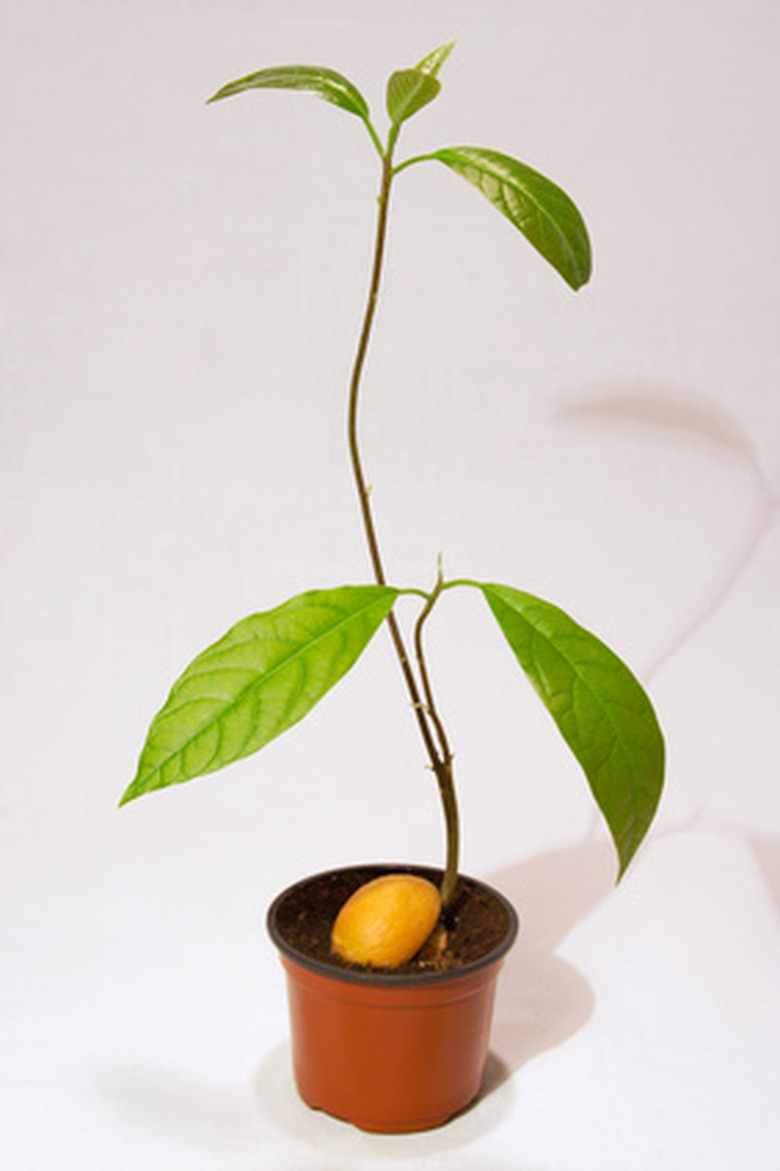How To Identify The Leaves On An Avocado Tree
Avocados are a favorite culinary and medicinal ingredient of many cultures, such as Spanish and American. The trees the fruit is harvested from can be difficult to recognize right away. Whether you're looking for more information on the tree or would like to identify one on your own, it is important to be able to identify the leaves of this tree first and foremost, if there is no fruit to help you. The leaves usually stay on the tree for two to three years.
Step 1
Examine the growth pattern of the leaves. Avocado leaves all have their own stem and grow alternately, meaning that every other leaf grows in the opposite direction of each other.
Step 2
Look underneath the tree, if it is a large mature tree, for piles of leaves. Even though the avocado leaves stay on the tree for a couple years, when they do fall off they are very slow to compost because of the high oil content. This means there will be collections of leaves around the base of the tree.
- Avocados are a favorite culinary and medicinal ingredient of many cultures, such as Spanish and American.
- Even though the avocado leaves stay on the tree for a couple years, when they do fall off they are very slow to compost because of the high oil content.
Step 3
Look closely at the leaves. They should have an elliptical shape with smooth edges. The color is dark green, shiny and glossy, with pale green veins lightly running through the leaves.
Step 4
Look at the leaf size. Each should be anywhere from 5 (for younger) to 10 (for more mature) inches in length.
Step 5
Smell the leaves and also consider the variety of the avocado tree. For example, West Indian avocado leaves have no smell, while Mexican and Guatemalan varieties smell like anise when crushed.
- Look closely at the leaves.
- The color is dark green, shiny and glossy, with pale green veins lightly running through the leaves.
Kill An Avocado Tree
Rake back any mulch or ground clutter from around the base of the avocado tree so it is easier to work. Choose a time in the spring or early summer when the tree is actively growing for best results. Wear gloves to protect your hands while working. Use a handsaw for smaller diameter trunks and push the tree over. Cut one-third of the way into the trunk horizontal to the ground. The tree will fall on the V cut side, with the cut on the other side serving as a tension release that allows the tree to lean into the V. Pour full strength glyphosate herbicide into a plastic container. Dip a paintbrush into the glyphosate and paint the freshly cut stump. Monitor the stump for the next several months and watch for new growth sprouting from the stump.
- Rake back any mulch or ground clutter from around the base of the avocado tree so it is easier to work.
